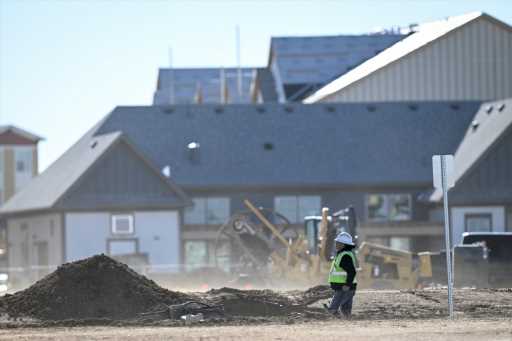Colorado building codes aimed at powering buildings with electricity
Colorado is rolling out model building codes that will make new construction ready for solar panels and electric vehicles and appliances, all intended to help the state cut greenhouse gas emissions and make the transition to renewable energy.
The codes will apply to new buildings and ones that undergo substantial renovation. Starting July 1, municipalities that update their building codes or adopt new ones must approve codes that meet or exceed both the 2021 International Energy Conservation Code and the new state requirements.
A 2022 law directed that a board made up of members from different interest groups and appointed by the energy office and the Department of Local Affairs develop the building codes.
“The legislature saw the importance of buildings to meeting our state’s pollution reduction targets. Buildings are one of the top five sources of greenhouse-gas pollution,” said Will Toor, executive director of the Colorado Energy Office. “We can’t achieve our climate goals without really increasing energy efficiency and embracing these new technologies, making it easier for people to do things like solar energy and heat pumps.”
Making new buildings solar- and electric-ready is easier and much less expensive than retrofitting buildings, Toor said. The buildings will have to be pre-wired for electric power sources, but could still hook up to natural gas.
In Colorado, building codes are adopted and enforced at the local level, but are subject to statewide minimum requirements.
As the state stresses the benefits of electrifying buildings from the start, homebuilders say the codes will increase the cost of new homes.
“While we share the goals of reducing energy use and emissions, we must balance these goals with all housing costs,” Ted Leighty, CEO of the Colorado Association of Home Builders, said in an email.
The association provided testimony, comments and feedback on drafts as the codes were developed, Leighty said. The primary goal was to make sure that affordability was taken into account.
“Unfortunately, while we are working with elected officials and housing advocates at the state and local levels to address housing affordability, this new code will mandate increases in the cost of housing — ultimately pricing too many homebuyers out of the market,” Leighty said.
The Colorado Municipal League initially opposed House Bill 22-1362, which mandated the new codes, but dropped its opposition after changes were made, said Kevin Bommer, the league’s executive director.
“However, CML remains skeptical of the continued attempts to centralize local planning and zoning, including building code updates, with the state,” Bommer said in an email.
The league fought hard against a bill in this year’s legislative session proposed to address the state’s housing shortage through statewide zoning standards. The bill, which failed, threatened municipalities’ authority over local land-use decisions and would have imposed unfunded mandates on local governments, the CML said.
The new building codes include unfunded mandates, said Bommer, but added that CML appreciates that grants will be available to help fulfill the requirements.
The Colorado Energy Office will offer $2 million in grants to help local governments adopt and enforce the new codes, said Adam Berry, a senior program manager at the agency. Another $2 million can be used for third-party contractors and vendors to provide training to local governments and education for builders, architects, designers and others in the building industry.
Toor said other grants will support electrification of public buildings and aid projects to electrify buildings on a neighborhood scale.
A state inventory found that residential and commercial buildings represented roughly 10% of Colorado’s greenhouse-gas emissions in 2019. Toor said other inventories often show higher percentages due to differences in accounting for emissions from electric and fossil fuel power sources.
While homebuilders and municipal representatives have raised concerns about the new requirements making homes more expensive, Toor and Berry said it’s much cheaper to make a new home electric-ready rather than retrofit a building. Berry said a 2021 Department of Energy study specific to Colorado showed that wiring new homes for solar and electric power costs hundreds of dollars compared to thousands of dollars to do it later.
State and federal incentives will allow more Coloradans to install solar panels, electric-vehicle chargers and things like heat pumps, which will save them money on energy bills, Toor said.
Under a law passed this year, new multi-family buildings or ones that significantly renovate parking structures will have to add chargers for electric vehicles.
Toor said when the Department of Energy finalizes the guidelines on federal legislation, he expects Colorado to receive about $140 million that will provide for rebates and incentives for heat pumps and other improvements for low- and moderate-income residents.
As part of the push for more electrification of buildings and transportation, the state plans to analyze the demands on the electric system and ensure “we’re adding appropriate grid capacity as needed,” Toor said. Utilities, natural gas associations and conservationists will be asked to participate in the study.
Regarding electric vehicles, a study that looked at Xcel Energy’s service territory in Colorado said adding electric vehicles could be a benefit because it would generate more revenue. Charging at home can occur at night when the demand is low and there’s excess capacity on the grid, Toor said.
Source: Read Full Article


